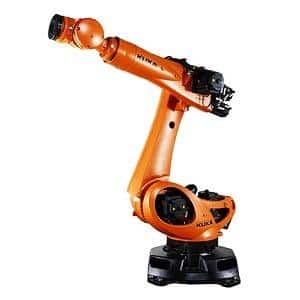In the mere eight months that 2016 has seen, industrial robotics has been a hot topic. Electronics companies, even shoe factories, are now fully automating some of their more repetitive tasks, prioritizing the efficiency of a robot above the efficiency of a human being. China has called on the expertise of German engineering to try and equip their factories with the very best industrial robots, and Barack Obama has been informing steel workers that jobs that have been replaced by automated systems might never come back. There hasn't been a better time for industrial companies to own industrial robots than now.
Whose market is it anyways?
 It's all about the industrial robot, it seems. Something no one expected, however, was that non-industrial robots would surge forward in the markets and overtake the market size that industrial robotics have been enjoying. According to a report by a research company who specialize in robotics - Tractica - industrial robots will only see 41% of total robotics revenue, whereas they currently hold 50%. The other 59% will belong to non-industrial robotics. The report was entitled Robotics Market Forecasts.
It's all about the industrial robot, it seems. Something no one expected, however, was that non-industrial robots would surge forward in the markets and overtake the market size that industrial robotics have been enjoying. According to a report by a research company who specialize in robotics - Tractica - industrial robots will only see 41% of total robotics revenue, whereas they currently hold 50%. The other 59% will belong to non-industrial robotics. The report was entitled Robotics Market Forecasts.
Tractica defines these non-industrial robots as consumer robots, enterprise robots, military robots, unmanned aerial vehicles, and autonomous vehicles. The director of research at Tractica , Aditya Kaul, said: "The definition of a robot is in flux and traditional robot manufacturers that have been building and supplying robots for decades have seen this industry undergo a dramatic transformation in the past few years."
Considered in this context, it is not surprising to see why non-industrial robots are doing so well. The FAA published new guidelines for unmanned aerial vehicles this year, in a move they say could produce 100,000 new jobs and generate $82 billion for the American economy. Home assistant robots are also slowly making their way to the market, as well. We focused on ASUS's Zenbo Robot recently. A robot that will be joining a host of new automated technologies for the home.
Furthermore, Tractica estimates that the robotics industry will grow from $34.1 billion in 2016 to $226.2 billion by 2021, solidifying a compound annual growth rate (CAGR) of 46%.
Industrial engineers, fear not
One novel idea that would see industrial robots gaining in the market, is using industrial robots for non-industrial applications. As these engineers have shown, industrial robots could even be used as the next generation of tattoo artists. The video show's the world's first tattoo performed by an industrial robot. After months of preparation, the engineers tirelessly worked to show that even industrial robots, in their robustness, can be precise enough to delicately work on a human object.
ABB Robotics have also outlined what the most popular applications for industrial robotics are. These applications will be keeping industrial robotics in the market due to their practicality, industrial companies have seen their usefulness. ABB has supplied many industrial engineering companies their robots, building more automated operations all over the world. Their top 10 list is as follows:
- Arc welding
- Spot welding
- Materials welding
- Machine tending
- Painting
- Picking, packing and palletizing
- Assembly
- Mechanical cutting grinding, deburring and polishing
- Gluing, adhesive sealing and spraying materials
- Other processes (inspection, waterjet cutting, soldering)
Source: Tractica
